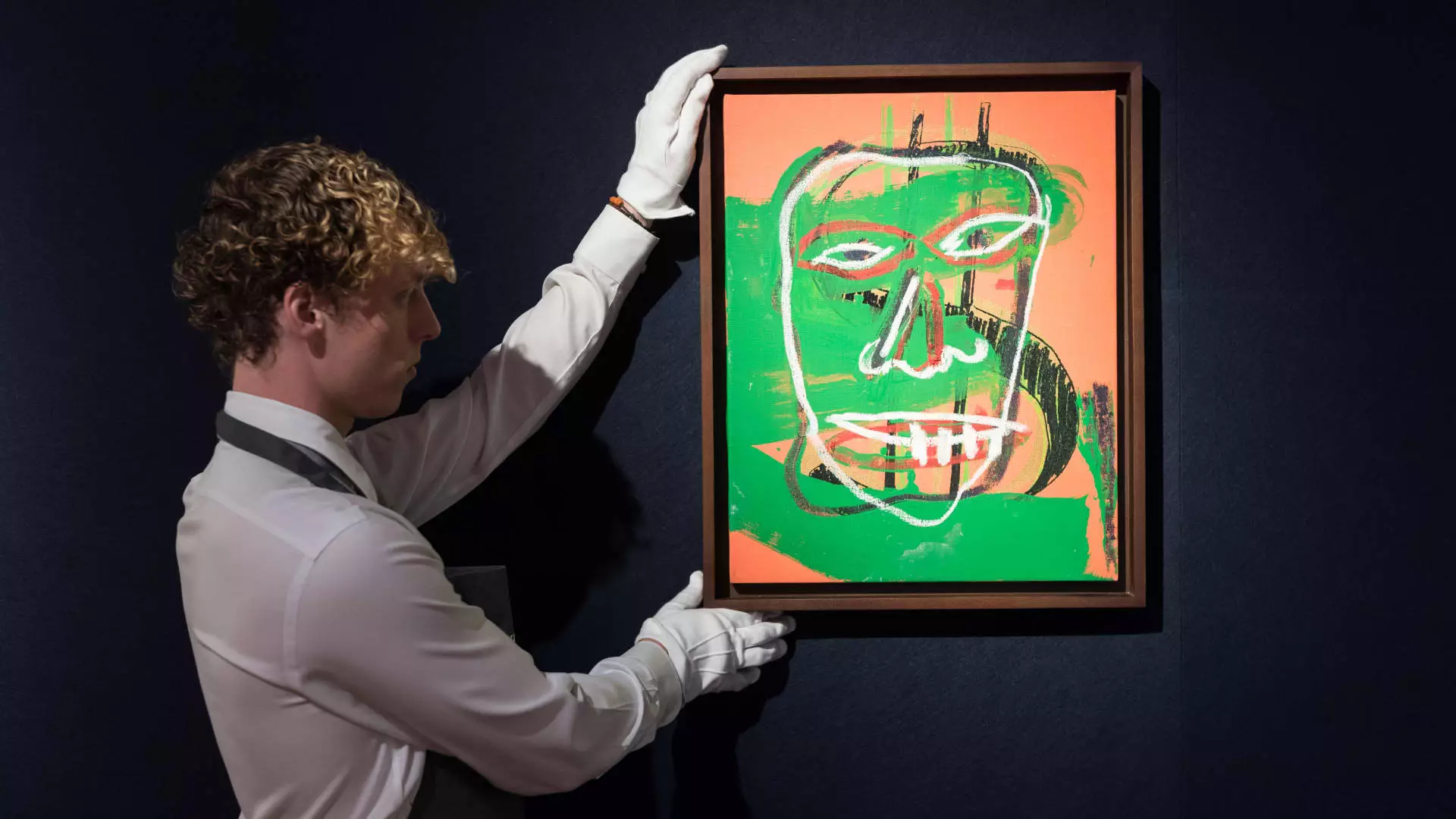The art market is currently facing a period of significant transformation, characterized by a notable downturn in both demand and pricing, alongside evolving preferences influenced by generational shifts among collectors. This evolution not only highlights the inherent volatility of the art world but also provides a glimpse into changing consumer behaviors that may reshape the entire market landscape in the coming years.
Declining Sales versus Optimistic Perspectives
Recent surveys indicate a concerning trend for the global art market, revealing a second consecutive year of declining sales. According to a report by The Art Basel and UBS Survey of Global Collecting, auction sales at previously esteemed houses like Christie’s and Sotheby’s have plummeted significantly—by 26% from 2023 and 36% from the market’s peak in 2021. This stark drop reflects a growing cautiousness among high-net-worth individuals, with only 43% indicating intentions to purchase art in the coming year, a notable decline from previous averages.
Even amidst this decline, there exists a surprising undercurrent of optimism. An overwhelming 91% of affluent collectors maintain a positive outlook on the art market’s performance over the next six months, up from just 77% at the end of 2023. Interestingly, this optimism surpasses even that surrounding the stock market, where only 88% expressed confidence. Despite a majority of collectors indicating plans to sell—55% in contrast to 43% intending to buy—the prevailing sentiments hint at a nuanced understanding of the market’s cyclical nature.
Shifting Dynamics Among Generations of Collectors
The art world is witnessing a generational transition that significantly influences buying patterns and market dynamics. Wealthy collectors from Gen X and millennials differ sharply in their buying behaviors compared to older generations. Increasingly, these younger collectors emphasize affordability and relatable modern works over traditional high-value pieces, leading to a mismatch between supply and demand. Collectors from older generations are liquidating pieces from their collections—often those of nominal value—while younger buyers seek new forms of artistic expression.
As a result, the high-end market’s trajectory has shifted downward. The most sought-after pieces, which previously commanded prices of $10 million or more, are now less appealing to a new generation that prioritizes both budget constraints and more substantive engagements with art. While the older generation may have once driven the demand for expensive works, their current propensity to downsize collections creates a surplus of traditional artworks, further complicating the market’s health.
Several external factors are contributing to the cautious approach taken by collectors. Geopolitical tensions, economic slowdowns in key regions, and rising interest rates are combining to undermine buyer confidence. High net-worth individuals see greater potential returns in cash and government securities—averaging 5%—thereby decreasing their willingness to invest in art during such uncertain times.
Moreover, the argument of “art as an asset” is increasingly being scrutinized, with allocations to art from collectors’ portfolios decreasing from 22% in 2021 to just 15% in 2024. It’s crucial to note that while some of this decline can be attributed to a rise in other asset values, it indicates a significant pivot in how collectors understand and engage with their art investments.
Interestingly, the largest concern identified by collectors in the survey revolves around barriers to the free movement of art internationally, with regulatory issues and potential legal entanglements following closely behind. This highlights the complex interplay of art and law, emphasizing the need for collectors to remain vigilant as they navigate a terrain rife with challenges.
Furthermore, as the wealth transfer from older to younger generations looms on the horizon, many expect an infusion of inherited art into the market. However, findings reveal that while some recipients might sell inherited pieces, most tend to keep at least part of these collections. This trend counters the stereotype that new collectors will simply discard previous generations’ tastes in favor of modern preferences.
The Road Ahead
Navigating the art market in this evolving landscape will require adaptive strategies and a nuanced understanding of the respective generations of collectors. As the market undergoes these transformative shifts, art dealers and auction houses must recalibrate their approaches to foster engagement with a newer, younger audience centered around accessibility and relevance instead of high price tags.
While the art market experiences declines and challenges, it also stands on the brink of potential reinvigoration. By embracing innovation and attentively responding to the preferences of emerging collectors, the art world could ultimately discover new pathways for growth and engagement in the years to come. The interplay between economic factors and generational shifts will undoubtedly guide the market’s evolution, creating a new artistic landscape that values diversity and modernity alongside tradition.

